In this post, we’ll explore several early spring annual flowers that can brighten your garden, including their unique characteristics, care tips, and the joy they bring to our lives.
Snapdragon
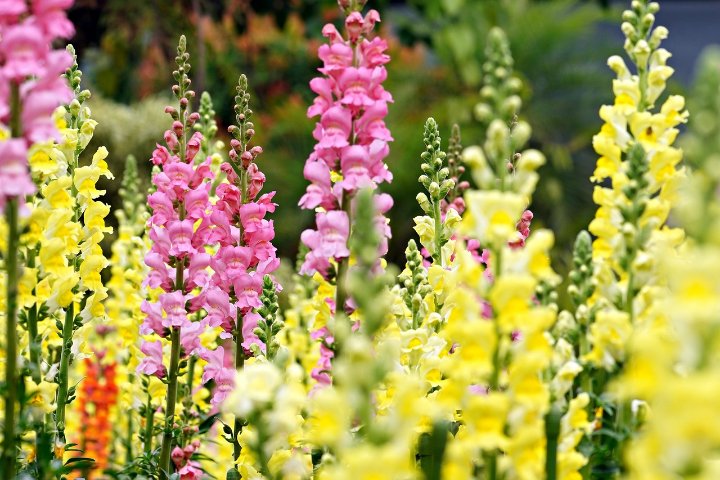
Snapdragons (Antirrhinum majus) are among the earliest to grace our gardens in spring with their tall spikes of colorful flowers. These charming blooms come in a variety of colors, including shades of pink, red, yellow, white, and purple. Their unique flower shape resembles a dragon’s mouth, which opens and closes when pinched, making them not only beautiful but also fun to interact with.
Snapdragons thrive in well-drained soil and perform best in full sun to partial shade. They are quite hardy, often tolerating light frosts, which makes them perfect for those unpredictable early spring days. Their vertical growth habit can add height to your garden, while their rich, fragrant blooms can attract bees and butterflies, encouraging pollination in your garden. Combining snapdragons with lower-growing flowers creates an eye-catching layered effect that enhances the beauty of your floral display.
Sweet Pea
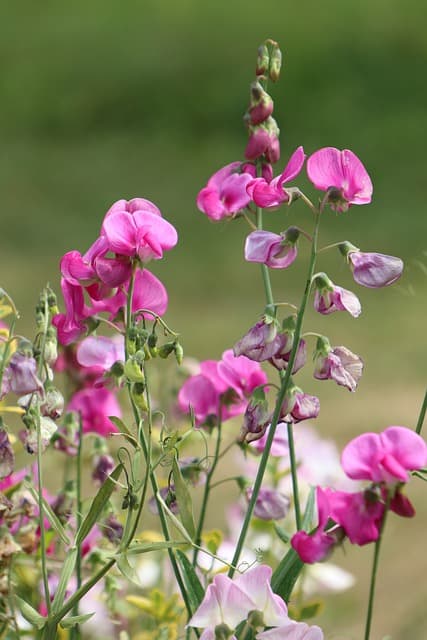
A true sign of spring, sweet peas (Lathyrus odoratus) fill the air with their delightful fragrance and come in a range of soft pastels and vibrant hues. With their delicate, climbing habits, sweet peas are perfect for trellises or fences, allowing them to reach new heights while spreading sweetness throughout your garden.
Plant sweet peas in rich, well-drained soil, ideally about six weeks before the last frost date. This will allow them to establish strong roots that can withstand the cooler spring temperatures. Not only do sweet peas add vertical interest, but they also offer cut flowers that can transform any room into a fragrant oasis. Remember to pinch back the tips of their stems to encourage bushier growth and more flowers. The blooming sweet peas evoke nostalgia, as their scent often transports gardeners back to childhood memories of fragrant gardens.
Pansy
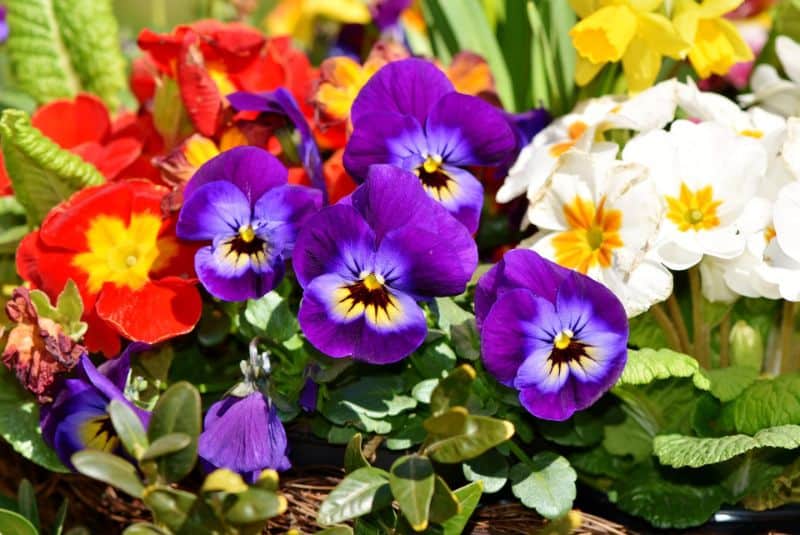
Pansies (Viola tricolor var. hortensis) have long been cherished as one of the harbingers of spring, and for good reason. With their unique “face” patterns and a kaleidoscope of colors, these cheerful flowers bring an instant lift to any garden. Their heart-shaped petals, often decorated with contrasting markings, entice gardeners and passersby alike.
Pansies prefer cooler conditions, making them ideal for early spring planting. They thrive in a mix of sun and shade and take well to various soil types as long as they are well-drained. For a long-lasting display, deadheading spent flowers encourages continued blooming throughout the season. Their versatility makes them perfect for borders, window boxes, or even as companions to other spring bulbs. The addition of pansies to your garden not only enhances the visual appeal but also brings an air of whimsy and charm.
French Marigold
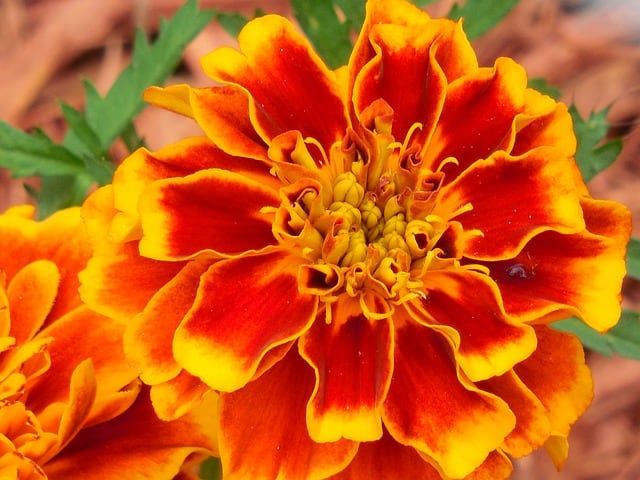
French marigolds (Tagetes patula) are the ideal annual for early spring, boasting vibrant yellows, oranges, and deep reds. Known for their bushy habit and abundant flowers, they make a spectacular addition to any garden or container. Their unique ability to thrive even in less-than-ideal conditions makes them incredibly resilient, which is yet another reason they’re beloved by gardeners.
French marigolds prefer full sun and well-drained soil. They are low maintenance and deter pests, making them excellent companions in vegetable gardens. Their high levels of limonene help to repel harmful insects, allowing them to act as a natural pesticide. Additionally, marigolds’ cheerful blooms lure in pollinators, creating a lively ecosystem right in your backyard. With an easy-to-grow stature and vibrant color, French marigolds are an essential for any spring flower lineup.
Calendula
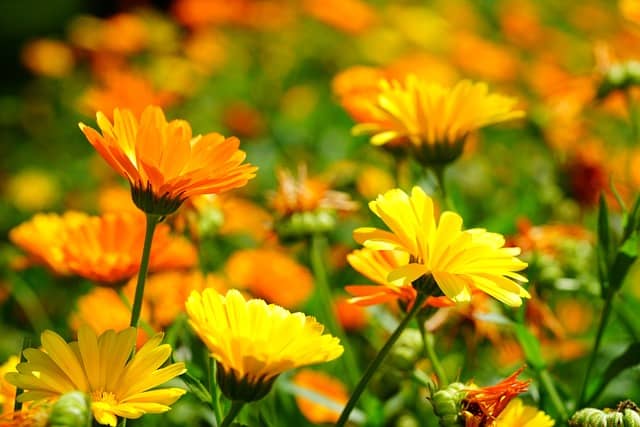
Calendula (Calendula officinalis), commonly known as pot marigold, offers a more delicate but equally radiant appearance in the garden. Its sunny orange and yellow blooms are both edible and medicinal, making it a versatile choice for any gardener. The petals can be used in salads, infused into oils, or simply enjoyed for their cheerful beauty.
Calendula is easy to grow, thriving in well-drained, fertile soil with plenty of sunlight. As a cool-season annual, it can withstand lighter frosts and will reward you with blooms from early spring until the first frost in fall. A gentle deadheading helps promote continuous flowering. These charming flowers not only light up your garden but also serve as a natural remedy, known for their antiseptic and anti-inflammatory properties.
Poppy
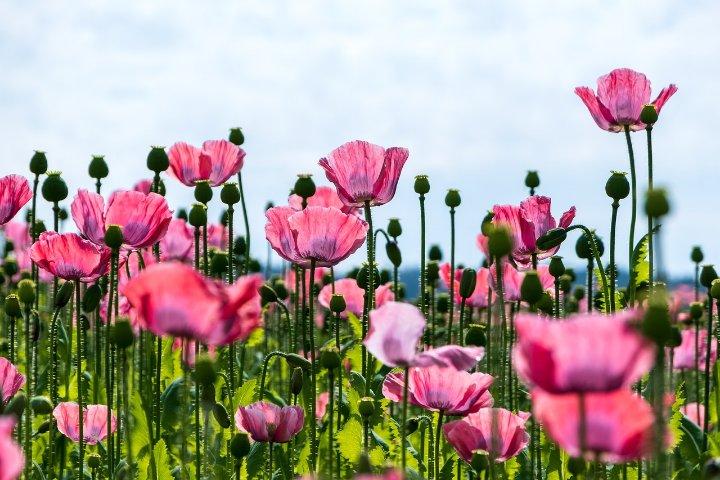
The poppy, especially the California poppy (Eschscholzia californica), brings a burst of color to spring with its bright orange and yellow petals that seem to dance in the breeze. Not only do they add a striking appearance to the garden, but they are also known for attracting beneficial insects like bees and butterflies.
Poppies prefer well-drained soil and full sun, making them low-maintenance once established. They can self-seed, leading to a delightful surprise of blooms year after year. Their delicate, papery petals and feathery foliage provide a beautiful contrast when paired with other flowers. However, poppies have a short blooming season, lasting from early spring until early summer, so planting them alongside longer-blooming flowers ensures a visual delight throughout the growing season.
Gerbera Daisy
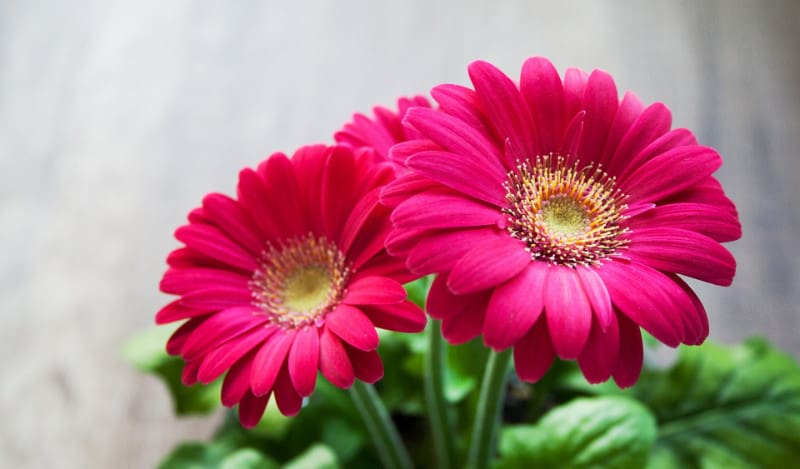
Gerbera daisies (Gerbera jamesonii) are a burst of cheerful color that can transform any garden into a vibrant landscape. With their large, striking blooms in red, pink, orange, and yellow, they are a favorite for both gardeners and florists alike. Their bright, cheerful appearance and sturdy stems make them perfect for cutting and bringing indoors.
Gerbera daisies thrive in well-drained soil and require full sun to produce their best blooms. Regular watering and deadheading spent flowers will encourage continuous blooming throughout the spring. These flowers make wonderful additions to borders, mixed containers, or as stand-alone accents in sunny spots. Not only do gerbera daisies brighten your garden, but they also uplift spirits, making them ideal for celebrations and joyful gatherings.
Bachelor’s Buttons
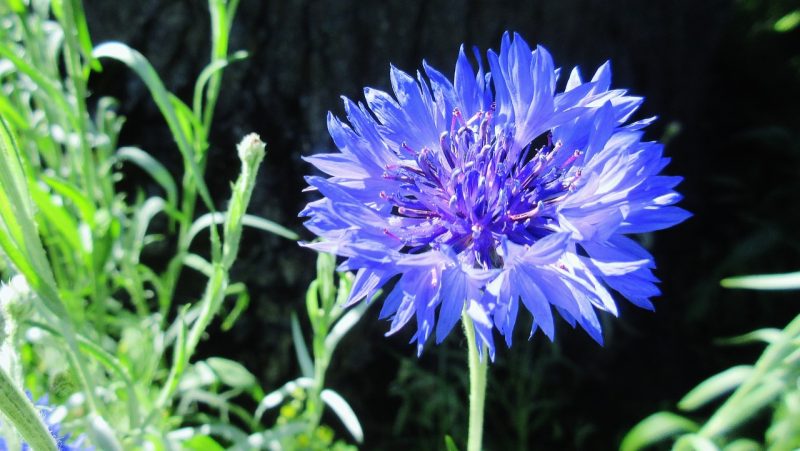
Bachelor’s buttons (Centaurea cyanus), also known as cornflowers, are charming annuals that can’t be overlooked in the early spring garden. These classic blooms have a whimsical quality, with their delicate petals emerging in hues of blue, pink, and white. Their distinctive shape lends a sense of nostalgia to our gardens, reminiscent of country life.
Bachelor’s buttons thrive in full sun and can tolerate poor soil conditions. They are fast-growing and can self-seed, providing you with delightful surprises each year. Their sturdy stems make them excellent for cutting, allowing you to enjoy their beauty indoors. Typically, these flowers bloom from early spring into early summer, providing an essential splash of color during the early gardening season. Growing bachelor’s buttons offers us not only an engaging gardening experience but also a touch of simple beauty that connects us to the past.
Stock
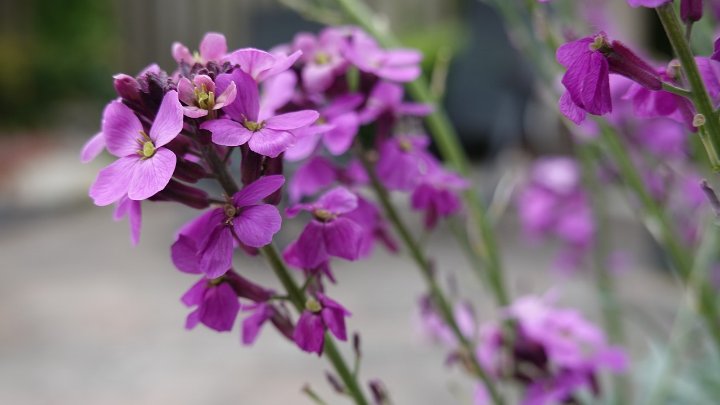
Stock (Matthiola incana) is a stunning flower that often evokes feelings of nostalgia, making it a beautifully sentimental addition to the garden. Its lush spikes of blossoms come in a variety of colors, including soft pastels and vibrant shades. The aromatic scent of stock adds to its allure, inviting bees and butterflies to your garden.
Stock prefers well-drained, fertile soil and full sun to partial shade. It thrives during the cooler months of spring and will produce blooms if cared for properly. Deadheading spent flowers can encourage a prolonged blooming season. Their delightful fragrance and abundance of colorful blooms make stock a favorite in flower arrangements. These flowers create a sense of elegance and charm, allowing you to enjoy a fragrant experience in your garden.
Alyssum
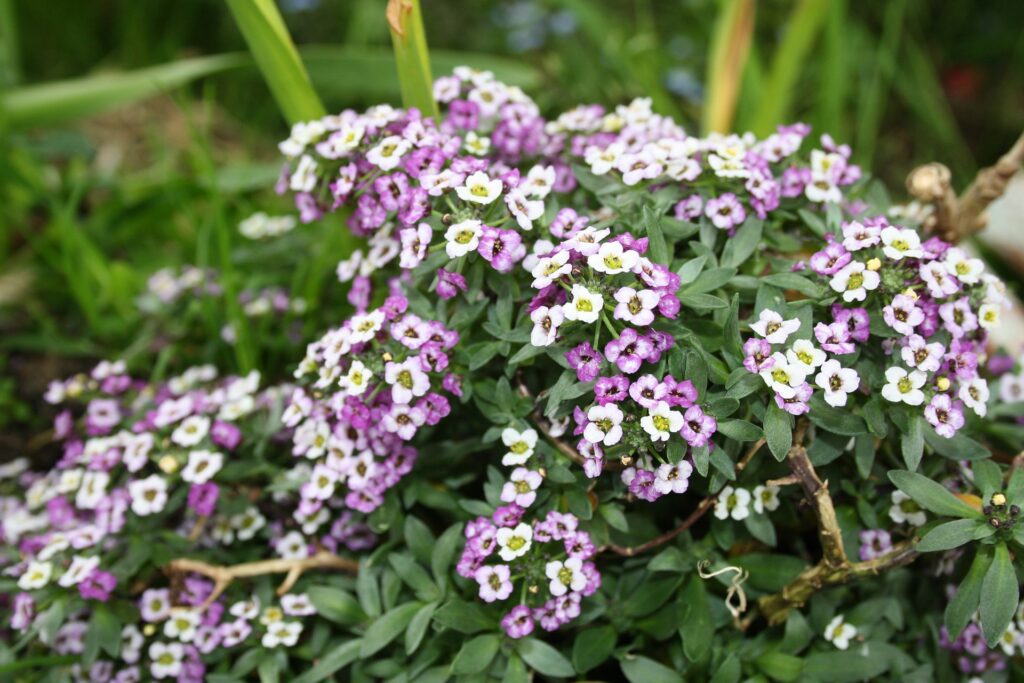
Sweet alyssum (Lobularia maritima) is a charming little flower often overlooked in the annual flower landscape. With its tiny clusters of white, purple, or pink flowers, alyssum creates a delicate carpet of color that can soften any garden space. Its sweet fragrance is a delightful bonus, inviting pollinators to visit.
Alyssum thrives in well-drained soil and prefers full sun but can tolerate partial shade. Its low-growing nature makes it perfect for borders, hanging baskets, or as a filler between larger blooms. This plant is also particularly hardy during cooler springs and can provide color until summer. Additionally, alyssum is known for attracting beneficial insects and pollinators, making it a great choice for those looking to enhance their garden’s ecosystem. Its modest beauty coupled with delightful fragrance makes alyssum a beloved spring flower.
African Daisy
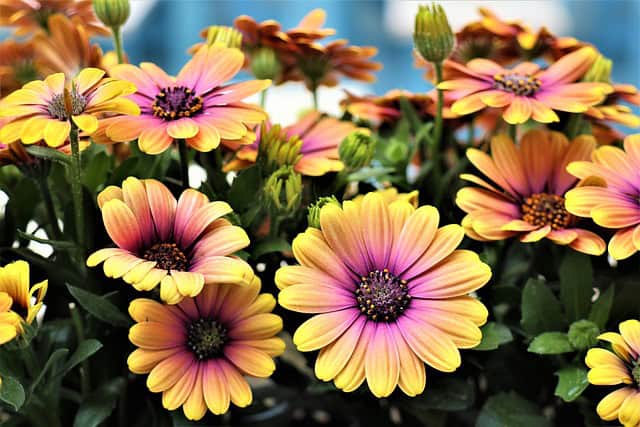
African daisies (Osteospermum spp.) bring a bright cheeriness to the garden with their unique, vibrant blooms. These flowers provide stunning colors, often featuring vivid blues, pinks, purples, and whites. The unique characteristics of their flowers, which can change hues depending on the weather conditions and time of day, create an ever-evolving visual experience.
These daisies enjoy well-drained soil and full sunlight to perform at their best. Once established, they are fairly drought-tolerant, making them a practical option for gardeners in warmer climates. Their long-lasting blooms can last from early spring until late summer, providing a continuous source of color. Additionally, African daisies are known to attract butterflies, adding to their appeal in the garden. The combination of their unique colors, adaptability, and ability to attract wildlife makes African daisies a joyful addition to any early spring garden.
Nemesia

Nemesia is a charming little flower that flourishes during the cooler months of spring and offers a lovely array of colors, including blue, violet, white, and pink. These flowers typically have a delicate, sweet fragrance that enchants anyone who stops to admire their beauty. Their compact growth habit makes them perfect for containers and garden borders, adding a splash of color wherever needed.
Nemesia prefers well-draining soil and full sun to partial shade. While they are relatively hardy, they respond best to regular watering, especially in warmer temperatures. Encouraging a bushier growth through pinching can lead to more abundant blooms. The delightful fragrance and range of colors make nemesia a wonderful choice for hanging baskets or mixed garden beds, infusing your garden with the spirit of spring.
Geranium

One of the most beloved of all annual flowers, geraniums (Pelargonium) provide long-lasting blooms in a multitude of colors. These charming flowers add a sense of nostalgia to the garden, as they have been cherished by gardeners for generations. Their sturdy leaves and vibrant blooms make them popular for containers, hanging baskets, and garden borders alike.
Geraniums prefer well-drained soil, full sun, and their care is quite simple, making them an excellent choice for beginners. Regular deadheading encourages continuous blooming, while proper watering keeps them healthy. Their resilience in various climates has earned geraniums a place in gardens worldwide. With so many varieties to choose from, they add not only a pop of color to your garden but also the joy of nurturing a beloved flowering plant.
Ranunculus

Ranunculus (Ranunculus asiaticus) is a delightful addition to any early spring garden. Known for their rosette-shaped flowers and delicate, papery petals, ranunculus comes in vibrant shades of pink, yellow, white, and red. These flowers have an elegant, romantic quality that makes them favorite choices for bouquets and arrangements.
Ranunculus thrive in well-drained soil and prefer full sun. While they can be planted as bulbs in the fall, they are often started in early spring for blooms throughout the season. Diligent watering is crucial during their growth stages but less so once they’ve established and started blooming. The stunning and intricate flowers of ranunculus, combined with their adaptability, create a striking display in any garden setting. These flowers conjure feelings of joy and beauty, inviting admiration from all who encounter them.
Nasturtium
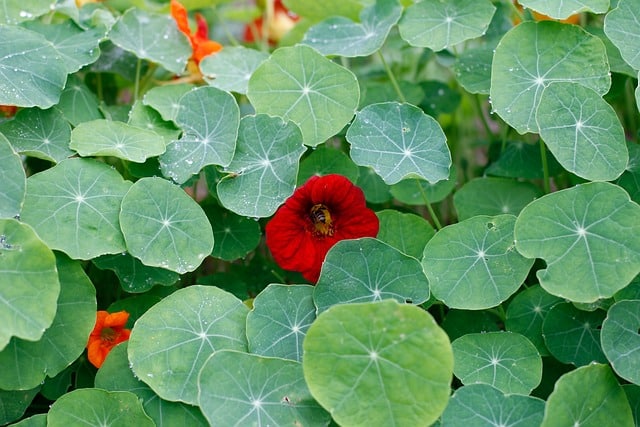
Nasturtiums (Tropaeolum majus) are an absolute delight in early spring gardens, revered for their vibrant color palette and unique, edible blooms. With striking shades of orange, yellow, and red, these trailing floral beauties bring warmth and culinary delight to any garden. Their round leaves and cheerful flowers not only beautify spaces but can also spice up salads and dishes.
Nasturtiums thrive in poor, well-drained soil with full sun exposure. Their preference for less-than-perfect conditions means that gardeners can enjoy their beauty without worrying about excessive care. These plants can be grown in containers, hanging baskets, or as ground cover. Their versatility and brilliant colors inspire creativity in the garden, making them a charming and practical choice for those looking to add flavor and fun.





